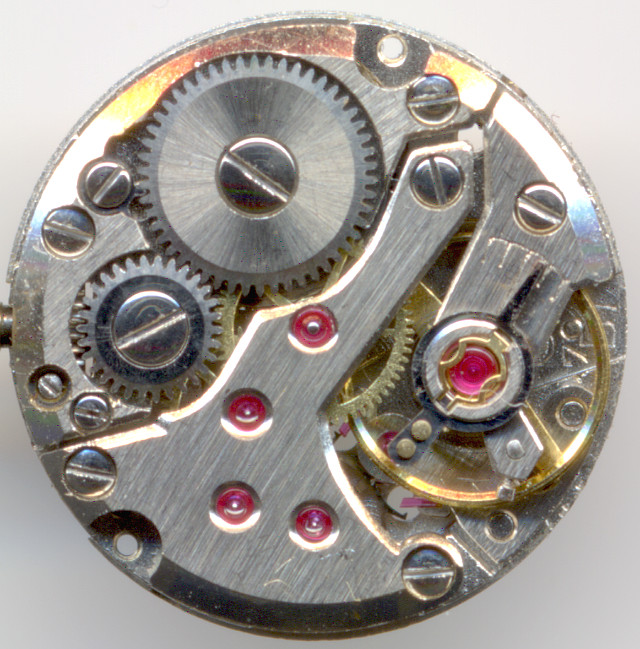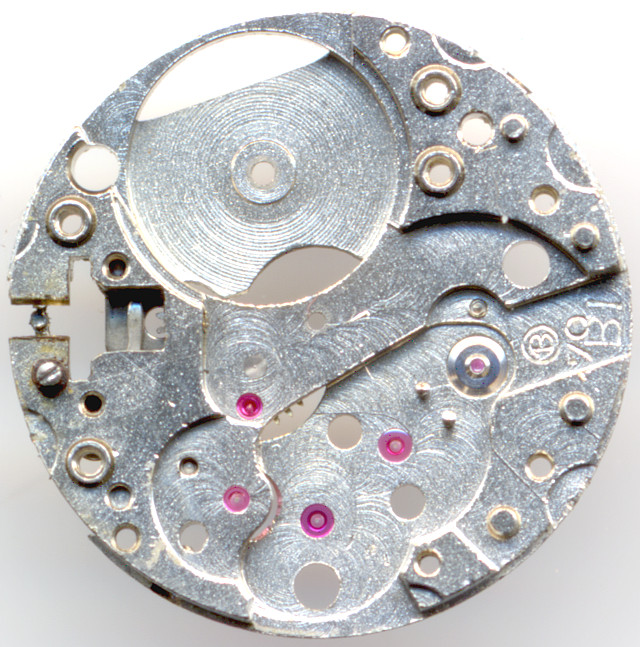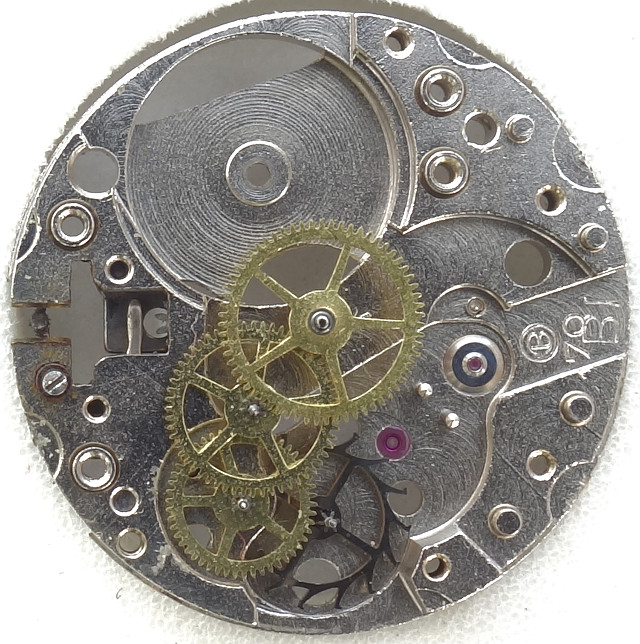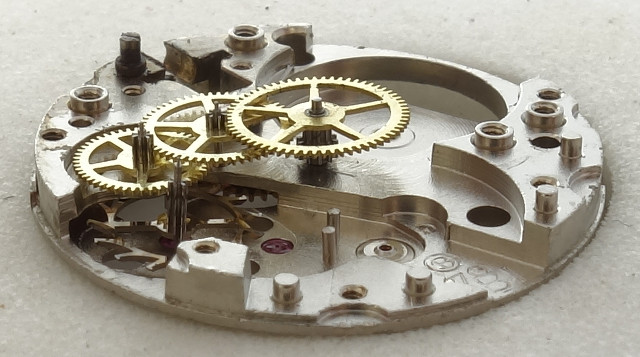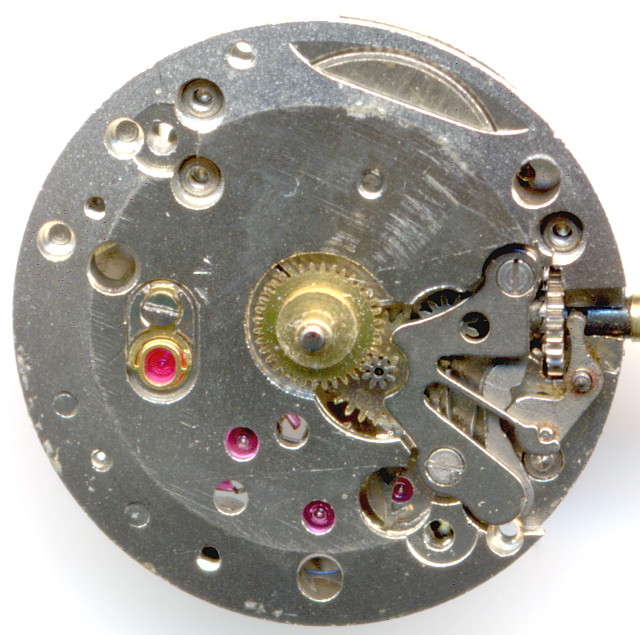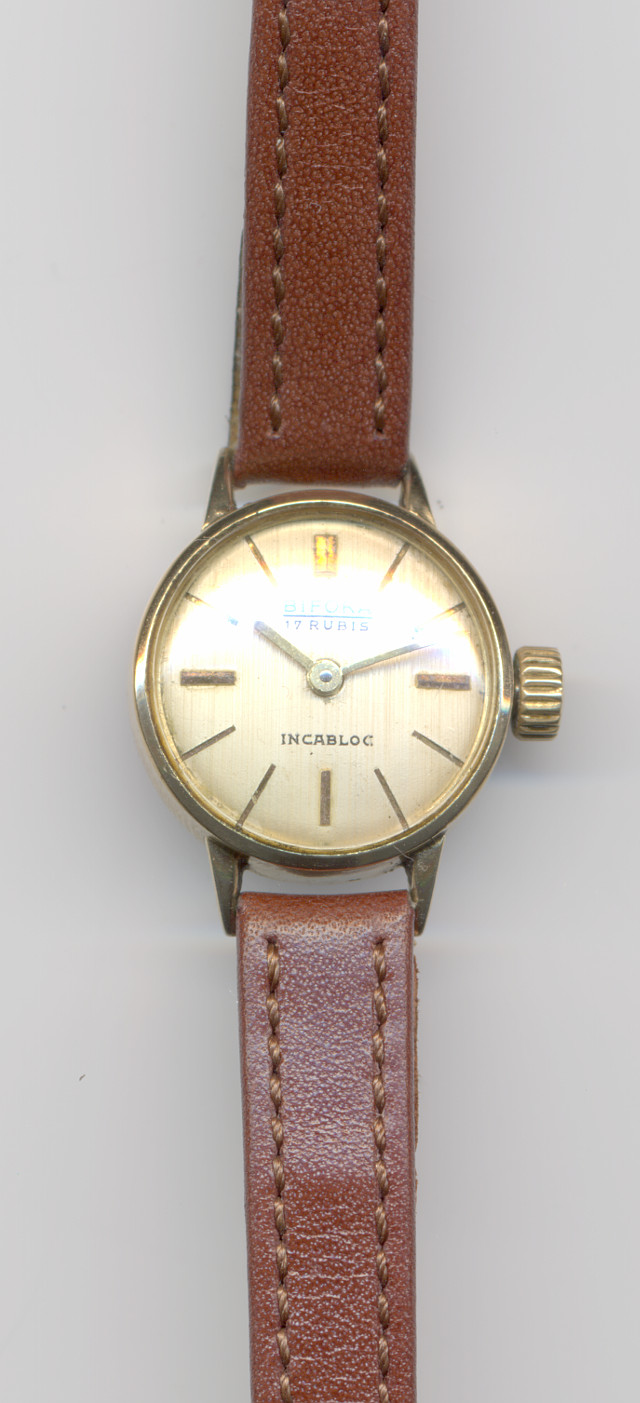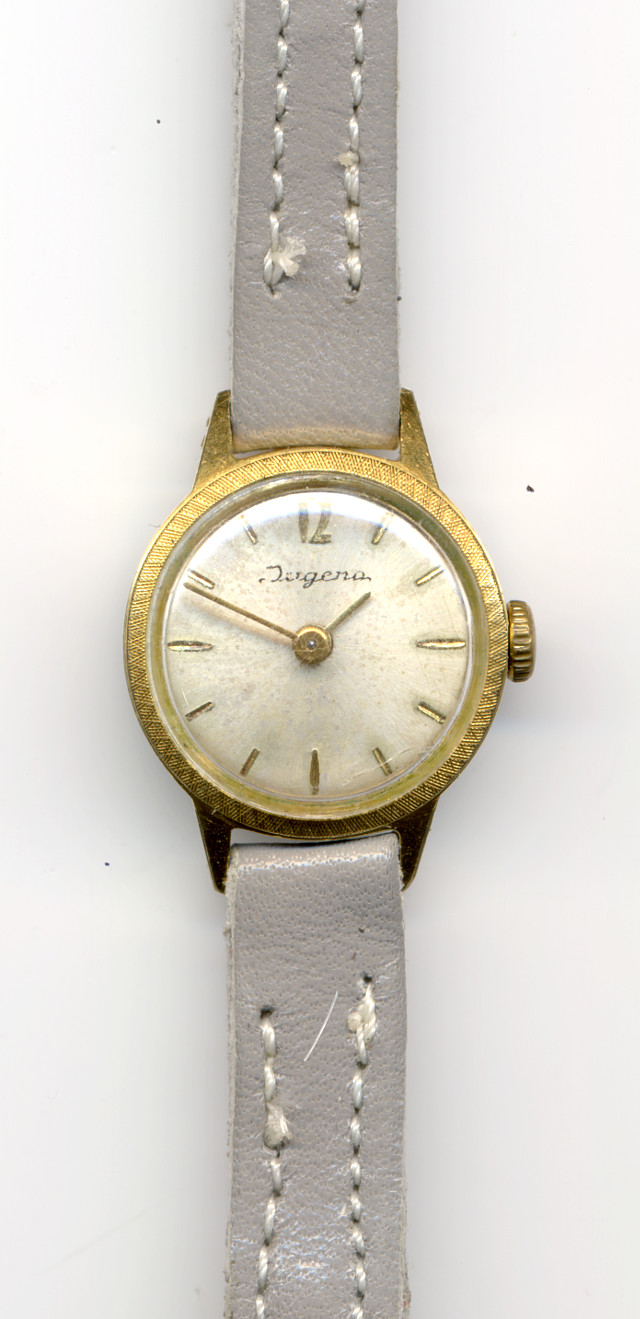Description
1958 Bifora in Schwäbisch Gmünd, Germany, released their smallest round manual wind movement, the Bifora 70.
With a diameter of only 7 1/4 lignes (15,8mm) it was a perfect for the tiny ladies’ watches, which were very popular at that time. Nevertheless it is astonishing, why Bifora released a round movement of that size, since back then for those watches, tonneau-shaped movements were usually used. Maybe because of that, the production ceased already in 1962.
The Bifora 70 was also used by Dugena, where it got its caliber number Dugena 1204:
It’s unknown, if all Dugena versions are golden colored.
The Bifora 70 was built with 16 and 17 jewels. The specimen shown here advertises 17 jewels on the dial, but I can only find 16: 4x Balance wheel, 1x Ellipse, 2x lever bearing, 2x pallets, 2x bearing escapement wheel, 2x bearing fourth wheel, 2x bearing third wheel and one bearing jewel for the minute wheel on the movement bridge.
The gear train is tradionally constructed. It’s noteable, that the gears have a rather small diameter and a two storey construction is used, where the bearing of the fourth wheel is above the escapement wheel. Such a space-saving construction is normally only used on form movements, and on the Bifora 70, you see, that there’s a lot of unused space.
The screw-less anular balance in beared in two Incabloc shock protection bearings (on the dial side the flat version) and beats slowly with 18000 A/h. It regulares a pallet lever movement of swiss type. The beating frequency can be adjusted with a long regulator arm - a detail of a high quality movement.
The dial side of the Bifora 70 is nice to see, with its youke winding system, its flat Incabloc shock protection and the large cutouts for the escapement wheel and the lever pallets, which makes oling the pallets (or the surfades of the escapement wheel) easier.
In the lab
The specimen shown here came in working condition into the lab, so no service and oiling was made.
The second specimen (the Dugena one) had a broken balance wheel and also a broken minute wheel.
Timegrapher result
In the horizontal positions, the movement showed very good results on the timegrapher, but on the vertical positions, they are pretty peer.| horizontal positions | |||
|---|---|---|---|
| dial up | +7 s/d | 206° | 2.8ms |
| dial down | +9 s/d | 197° | 2.0ms |
| vertical positions | |||
| crown right (12 up) | -2 s/d | 163° | 2.0ms |
| crown up (3 up) | -90 s/d | 177° | 2.0ms |
| crown left (6 up) | -150 s/d | 161° | 2.6ms |
| crown down (9 up) | -50 s/d | 144° | 2.6ms |
Technical data
| Manufacturer: | Bifora |
| Caliber: | 70 |
| Size: | 7 1/4''' (measured: 15,8mm) |
| A/h: | 18000 |
| lift angle: | 58° |
| Number of jewels: | 16 |
| Escapement: | Pallet lever |
| Balance types: | Nickel anular balance |
| Shock protection(s): | Incabloc |
| Balance bearing / direction hairspring: | Clockwise |
| Moveable stud: | no |
| Adjust mechanism: | Long regulator arm |
| Construction: |
|
| Construction type: | solid construction |
| Winding mechanism: | yoke winding system |
| Setting lever spring: | 3 hole(s) |
| Production period: | 1958 - 1962 |
| References: | Flume: K3 6 |
| Mentioning in literature (years): | 1964 - 1968 |
| Production years: | 1958-1962 |
| Inventory number: | 17035 |
